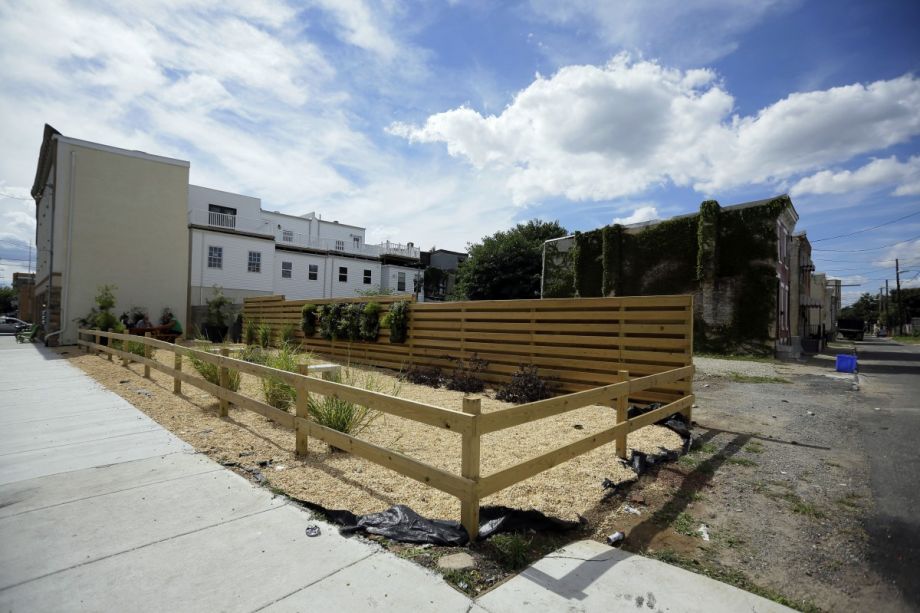Philadelphia needs to preserve and build 100,000 homes over the next ten years if it’s going to meet the needs of its residents, according to a Housing Action Plan the city released last year. And in the poorest big city in the United States, it’s no surprise that the greatest housing need is at the lowest end of the income scale: Close to 40 percent of that total should be tailored for households earning less than 30 percent of median income, the plan says.
New supply is needed at higher income levels as well. Last week, the Philadelphia Redevelopment Authority announced that it is expanding a program designed to encourage more private investment in development projects that serve people who earn between 100 and 120 percent of area median income — or $87,400 to $104,880 for a family of four. The program, called the Workforce Housing Credit Enhancement, acts as a loan guarantee for income-restricted housing projects that utilize public land. For qualifying projects, the PRA will secure up to 25 percent of construction loans up to $3 million, capping the guarantee at $750k per project. The goal, says Greg Heller, executive director of the Redevelopment Authority, is to reduce the risk that private lenders take on when they finance income-restricted projects, with the hope of encouraging them to make more financing for workforce housing available overall.
If a bank only offers a loan at 60 or 70 percent of the cost of construction, Heller says, that means that the developer needs to have that cash, which small and mid-size developers don’t necessarily have. “And with workforce housing, we’re restricting the sale price, so we’re artificially limiting the amount of profit a developer can make,” he adds. “So we’re basically saying to the developer, you need to make less profit and put in more cash than you normally would … that wasn’t an equation for success.”
One upside of the program for the Authority is that it doesn’t require any upfront subsidy. And unless a developer ends up defaulting on their loan, it doesn’t require any subsidy at all. The Authority will also collect a small fee on projects that take up the credit enhancement offer.
“We want the market to build workforce housing, and we acknowledged that the public sector needs to be involved,” Heller says. “But we’re looking for that touch to be as light as possible.”
Expanding the credit enhancement product was included as a priority in the Housing Action Plan as well. One of the goals of that plan was to acknowledge that new housing is needed at all income levels in the city, and neglecting any of those segments will have repercussions for the others, says Vincent Reina, an assistant professor of city and regional planning at the University of Pennsylvania School of Design and a research consultant on the Housing Action Plan. Reina says the credit enhancement is “a nice way of releasing pressure on the housing market” without requiring a major public investment. It can be especially useful for smaller projects that are harder to fund, he says. (EDITOR’S NOTE: This reporter also does freelance writing work for the University of Pennsylvania School of Design.)
“When you get to these smaller properties, it’s more difficult to find financing and that financing might be more costly, which as a result makes a development not happen or it raises the price of development,” Reina says.
The program, which was piloted in 2017 in partnership with the Philadelphia Land Bank, has the backing of Mayor Jim Kenney and City Council President Darrell Clarke, who has made a priority of workforce housing over his last few terms in office. One early project that used the credit enhancement resulted in 26 new homes in West Poplar, a fast-gentrifying area between Center City and North Philadelphia, that will be listed for about $230,000 apiece.
Developers who build workforce housing, including the West Poplar project, say the credit enhancement is a useful tool to help free up financing for higher-risk projects. But Mo Rushdy, a managing partner at Riverwards Group, which has carried out workforce housing projects on public properties in Philadelphia before, says getting access to public land is a bigger hurdle than financing.
“The city has ultimate control into providing the workforce housing that’s needed,” Rushdy says. “It’s just a matter of how fast they dispose of land at numbers that will allow developers to build, still make a little bit of money, and sell these homes at workforce [affordable] numbers.”
For developers, there are only so many ways to reduce costs enough to sell homes at prices that people earning median wages can afford, Rushdy says. Acquiring public land at nominal prices, and passing those savings onto the buyers, is one of those ways. Taking advantage of loan guarantees makes financing easier, but doesn’t go very far toward lowering costs overall. Pairing the credit enhancement with streamlined disposition of city land for workforce housing will make the difference, Rushdy says.
“I think this is a program that really fights back the insanity when it comes to price increases,” Rushdy says. “I think there is great potential in this program for public-private partnerships, because there’s a lot of lots that the city is sitting on and people are willing to develop — if the process is easy.”
This article is part of Backyard, a newsletter exploring scalable solutions to make housing fairer, more affordable and more environmentally sustainable. Subscribe to our weekly Backyard newsletter.

Jared Brey is Next City's housing correspondent, based in Philadelphia. He is a former staff writer at Philadelphia magazine and PlanPhilly, and his work has appeared in Columbia Journalism Review, Landscape Architecture Magazine, U.S. News & World Report, Philadelphia Weekly, and other publications.
Follow Jared .(JavaScript must be enabled to view this email address)


















